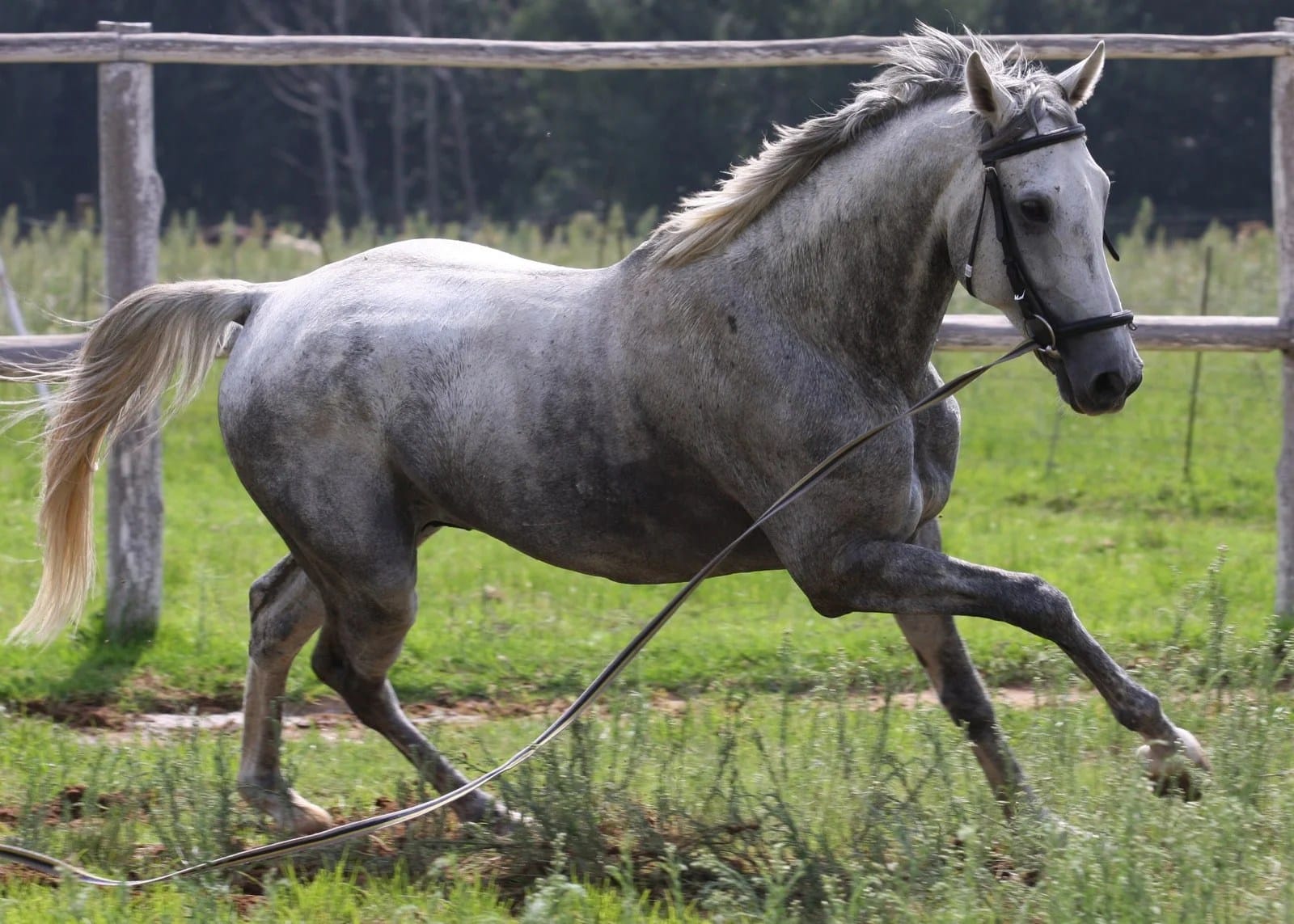Imagine a horse shimmering like quicksilver, its coat a canvas of dappled artistry. This is the dapple grey, a captivating equine whose beauty evolves through a unique color transformation. This comprehensive guide delves into the genetics, care, and cultural significance of these remarkable horses.
Decoding the Dapple Grey Coat
Dapple grey isn’t a breed, but a mesmerizing coat color transformation orchestrated by a dominant gene aptly named “Grey” (G). This gene acts upon the horse’s base coat—whether black, bay, or chestnut—gradually lightening it over time. As the coat transforms, often developing distinctive dapple patterns, it’s like witnessing a living work of art unfold. [https://www.lolaapp.com/]
The Genetics of Greying
The Grey (G) gene is a dominant trait, meaning a horse only needs one copy of this gene to exhibit the greying characteristic. It works by gradually reducing the production of pigment in the horse’s hair, leading to a progressive lightening of the coat. The dappling pattern itself is formed by darker rings of pigment that contrast with the increasingly lighter surrounding hair. [https://www.lolaapp.com/]
A Spectrum of Shades and Patterns
Just as no two snowflakes are alike, the dappling on each grey horse is unique. Some horses exhibit bold, well-defined rings, while others display a more subtle, almost marbled effect. This variance is due to individual genetic variations and the complex interplay of factors that influence pigment production. The final shade of grey can also vary widely, from a silvery white to a deep, steel grey.
True Dapples vs. Bloom: A Tale of Two Spots
Two distinct types of dapples exist: “true” dapples and “bloom” dapples. True dapples, the classic dark rings on a lighter background, are genetically determined and generally persist throughout the horse’s life. Bloom dapples, on the other hand, are more transient, influenced by factors such as diet and overall health. They may appear and disappear over time, adding another layer of intrigue to the dapple grey’s ever-changing coat. [https://www.lolaapp.com/]
The Greying Journey: A Timeline of Transformation
The progression of the grey coat is a captivating process that unfolds over years.
- Foal: Born with its base coat color (e.g., bay, black, chestnut).
- Early Years: Gradual lightening begins, sometimes with subtle early dappling.
- Young Adulthood: Dappling often becomes most prominent during this stage.
- Maturity: The coat continues to lighten, and the dapples may become less distinct or fade altogether.
- Senior Years: The horse may eventually become almost completely white or retain some shading of its original color. [https://www.lolaapp.com/]
Breeds and Dapple Greys
While the dapple grey pattern isn’t tied to any specific breed, the Grey gene occurs more frequently in some breeds than others. Andalusians, Percherons, Thoroughbreds, Lipizzans, Connemaras, and Welsh Ponies are just a few examples where this striking coat pattern is more commonly observed. This doesn’t mean that other breeds can’t be dapple grey, but the probability is higher in these breeds due to a greater prevalence of the Grey gene within their populations.
Caring for the Dapple Grey
Health Considerations
Grey horses, including those with dapple patterns, are predisposed to melanoma, a type of skin cancer. While not every grey horse will develop melanoma, regular veterinary checkups are essential for early detection and management. Ongoing research continues to explore the link between the Grey gene and melanoma, seeking to improve diagnostic and treatment options. [https://www.lolaapp.com/]
Grooming
Grooming a dapple grey is similar to caring for any other horse coat. Regular brushing helps maintain coat health, removes dirt, and distributes natural oils, keeping the coat shiny and vibrant. Special attention should be paid to areas where melanoma is more likely to occur, such as under the tail and around the genitals. [https://www.lolaapp.com/]
Dapple Grey Horses in Culture and History
Dapple grey horses have long held a place of distinction in human culture, often symbolizing nobility, grace, and power. Their striking appearance has made them popular subjects in art, literature, and film. From the chargers of medieval knights to the elegant steeds of equestrian competitions, dapple greys continue to capture our imagination.
Delving Deeper: Current Research and Future Directions
The study of equine coat color genetics is an ongoing field of research. Scientists are continually working to understand the complexities of pigment production, the role of the Grey gene, and the factors that influence dappling patterns. Future research may reveal more about the specific mechanisms involved in dapple formation and the relationship between coat color and health. [https://www.lolaapp.com/]
Unveiling the Secrets: Expert Insights and Owner Stories
To truly understand the dapple grey, it’s helpful to hear from those who know them best. Equine geneticists can provide valuable insights into the genetic complexities of this coat color, while veterinarians specializing in equine dermatology can offer guidance on health management. And, of course, the experiences of dapple grey horse owners offer a unique perspective on the joys and challenges of caring for these magnificent animals. [https://www.lolaapp.com/dormirse-conjugation]
Capturing the Essence: Photography Tips for Dapple Greys
Photographing a dapple grey horse presents an opportunity to capture its unique beauty. The interplay of light and shadow on the dappled coat can create stunning visual effects. Experimenting with different lighting conditions and angles can help you capture the full range of tones and textures in the horse’s coat. [https://www.lolaapp.com/dwellings-made-from-animal-hides]
By exploring the many facets of the dapple grey – from genetics to health, history to personal experiences – we can gain a deeper appreciation for these extraordinary horses. Their captivating color transformation serves as a beautiful reminder of the ever-changing wonders of the natural world.
- China II Review: Delicious Food & Speedy Service - April 17, 2025
- Understand Virginia’s Flag: History & Debate - April 17, 2025
- Explore Long Island’s Map: Unique Regions & Insights - April 17, 2025

















2 thoughts on “The Dappled Grey Horse: A Comprehensive Guide to Coat Color, Genetics, and Care”
Comments are closed.